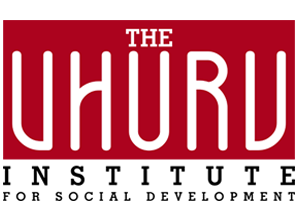New rules to protect Kenyan SACCO members
Kenya is working on new rules to tame deposit-taking SACCOs (DT-SACCOs) that fleece members through inflated charges, delays in reimbursement of deposits, and “reckless” lending and debt collection.
This comes amid concerns over mismanagement, fraud and bad loans that are putting the stability of the DT-SACCO subsector at risk.
The EastAfrican has learnt that the SACCOs Sector Regulatory Authority (Sasra), in collaboration with the National Treasury, has hired a consultant to come up with new market conduct regulations. The move is part of the government’s efforts to restore sanity in a sector that controls over $5 billion in members’ savings.
Sasra, with funding from the National Treasury’s Financial Sector Support Project, has appointed industry expert Gianfranco Vento to develop the market conduct policy as well as legal and regulatory framework for SACCO societies in Kenya.
Through a circular to the chief executives of DT-SACCOs, seen by The EastAfrican, the industry regulator said the existing regulatory framework governing the operations of DT-Saccos is inadequate and has left customers exposed to market abuse.
“Lack of adequate emphasis on market conduct regulations has amplified challenges relating to low savings and over-indebtedness, and undermines steps taken to make the DT SACCO subsector more accessible to improve financial inclusion,” said John Mwaka, Sasra’s chief executive.
According to Mr Mwaka, some of the malpractices prevalent in the subsector are high fees and incomprehensible charges, delay in reimbursement of member deposits upon expiry of the mandatory 60-day notice requirement, and reckless lending often paired with disgraceful debt collection practices.
REGULATION
Although the SACCO Societies Act (Cap 490B) has some elements that cover market conduct regulations, such as product disclosures, suitability of persons managing DT-SACCOs and conflict of interest, Sasra says these regulations cannot deal with market abuse.
“Market conduct regulation is oversight that focuses on regulated entities’ compliance with laws and regulations related to the financial service provider’s pattern of behaviour in executing its pricing and promotion strategy, and its responses to the realities of the market it serves,” said Mr Mwaka.
In 2017, DT-SACCOs loan-loss provisions increased by 23.4 per cent to Ksh10.7 billion ($107 million), from Ksh8.6 billion ($86 million), because of an increase in non-performing loans. In addition, the number of DT Saccos that hold over Ksh305 billion ($3.05 billion) of customer deposits declined to 174 from 176 in 2016, when two institutions failed to meet their financial obligations, leading to revocation of their licenses.
Sasra also rejected five applications out of seven that were either pending at the beginning of 2017 or received in the course of 2017, after the institutions failed to meet the minimum licensing requirements.
Five other Saccos operated on restricted licences in 2017 even though they had been issued with conditionally restricted licences in 2016.
According to Sasra’s annual report for 2017, Kenya’s DT-SACCOs manage over Ksh442 billion ($4.42 billion) of assets, and microfinance institutions control an estimated Ksh73 billion ($730 million.) Commercial banks have the lion’s share, estimated at Ksh4 trillion ($40 billion).
Although DT-Saccos collect deposits from the public, they do not hold reserve accounts at the Central Bank or operate in the automated clearing house owned by banks.
Sammy Rutto, a director at Sasra, said growth of the DT-SACCOs could slow down due to the absence of a deposit insurance facility and the Sacco’s non-participation in the national payments system. (Source / the EastAfrican)
The post New rules to protect Kenyan SACCO members appeared first on The Cooperator News.

Leave a Reply
Want to join the discussion?Feel free to contribute!